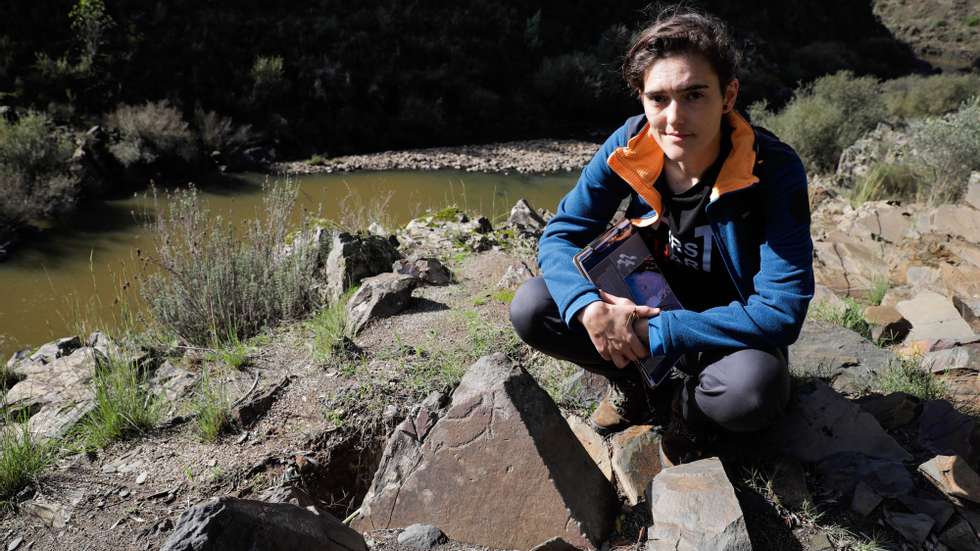A fourth engraving more than 20,000 years old, representing a horse, was discovered in the Ocreza Valley, in Mação (Santarém), being the second headless horse found there, archaeologists announced this Saturday.
In statements to the Lusa agency, the researcher and archaeologist from the Polytechnic Institute of Tomar and the Terra e Memória Institute of Mação, Sara Garcês, stated that the Paleolithic art found engraved in the rock is representative of a headless horseas the first engraving found in that valley, in the year 2000 —the Cavalo do Ocreza— and which, despite being smaller in size, may indicate “a pattern” of rock style.
“It is much smaller than the ones we have been finding and it also shows no evidence of having a head, which is quite peculiar. We started to think that, in this particular valley, it’s a pattern“It is a stylistic choice not to represent the heads of the animals,” he said.
Highlighting “the shape and figure of the horse” represented, the archaeologist classified it as “very interesting” due to its novelty.
The first Paleolithic engraving found in the Ocreza Valley was a headless horse, in the year 2000, and it was also the first found under the Côa and in the area of the Tagus Valley rock art complex.
A few months later, Portuguese and international archaeologists made reference more than 50 engravings in the Ocreza river valley of more recent chronology, which encouraged tourist visits to the area.
Today, more than a hundred engravings are identified in the Ocreza valley, with different typologies and chronologies, four of which are from the Upper Paleolithic: that of the Ocreza horse, discovered in the year 2000, that of a panel with several animals, including an aurochs, in 2021, again an aurochs, in 2023, and now, in 2024, another horse.
“The fact that we feel that this valley has a very great archaeological potential, made us start this new project very focused on Paleolithic figures and that also shows us that, in an excavation context, it is possible to find this type of figures and that the Ocreza valley has shown more and more evidence that, beneath the sediments, engravings can also be found,” highlighted Sara Garcês.
The archaeologist was referring to the prospecting work that will be carried out until 2026 at the bottom of the Ocreza valley, with a type of rock composed of schist, “extremely easy to engrave and which shows very good conservation of the engravings.”
The archaeologist Telmo Pereira, from the Autonomous University of Lisbon (UAL), who participates with Sara Garcês in the coordination of the prospecting work, highlighted to Lusa the “Immense satisfaction” for the discovery and the importance of a “trained eye” for what is sought, given the difficulties imposed by luminosity, the engravings being only perceptible at certain times of the day.
“It’s always a special moment, because normally they’re not like that. [descobertas] of faces… this one, since it was smaller and in a more discreet position, we didn’t see it right away because it is much easier to find these engravings when there is little light,” said the researcher.
“There are several engravings that, at certain times of the day, we can be looking at the stone and not see them. There is one that has a peculiarity that lasts half an hour, where it is seen very well and the rest of the day it is practically not seen and, therefore, taking that into account, it really brightened the day,” he stated. .
According to the archaeologist, the objective now is to associate the artifacts with sediments or other materials that can be dated with the engravings.
“Therefore, associating, so to speak, a camp, even if it was temporary, with this rock art,” he said.
“That will be the next objective (…) to find this camp that allows us to make the association between the age, the artifacts, the rock art and the behavior of the people and their survival in a certain period, which we know will probably have “It must be to the climate crisis,” he said.
Source: Observadora
